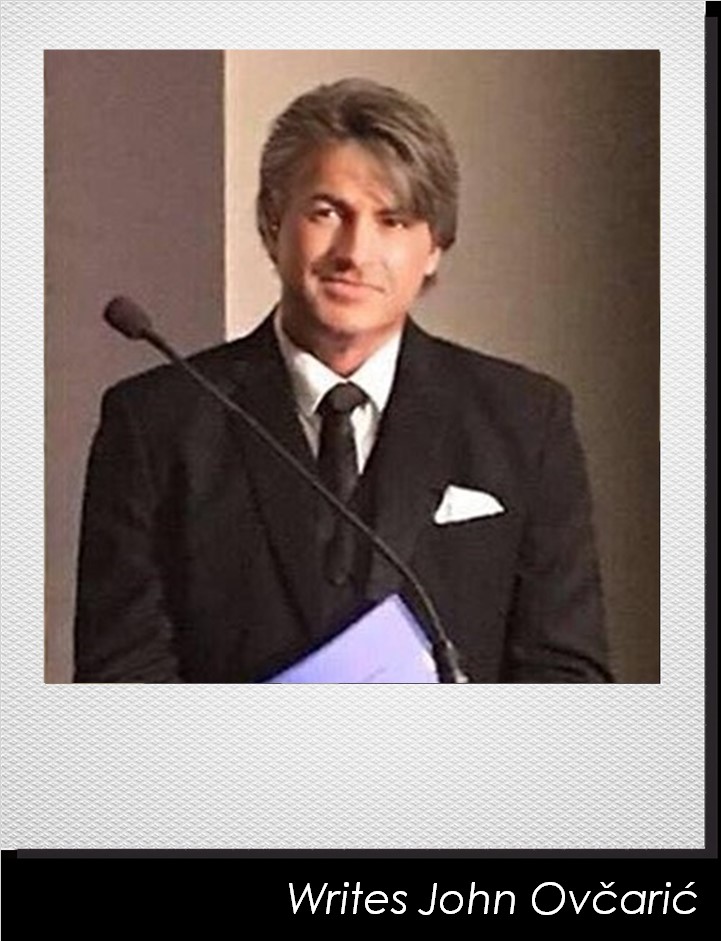
The recent controversy surrounding the Australia Cup Football match played between Sydney United 58 FC and Macarthur FC highlighted the sensitivities relating to ethnic symbology and traditions in how they are perceived, acknowledged, and manipulated by both Croats and non-Croats alike.
We need to lay our cards on the table here, and in order to do this we need to examine some examples so as to understand how the corruption of national symbiology can, and has, taken place, while in other instances equally, or greater corrupted forms belonging to other nationalities has seemingly flown under the radar and has been accepted internationally based on false premise.
Hence the title of this editorial “False Flag”” Croat symbology. The current Croatan flag and coat of arms embellished upon it is a manifestation of circumstance. When Croatia’s first internationally elected and recognised President Franjo Tuđman appeared before the masses he brandished, after almost half a century, a regal sash carrying the red white and blue striped flag of Croatia and within its white field the historic Croatian coat of arms, which had been ratified by the Croatian parliament in 1868 as the official Croatian coat of arms which had existed for centuries alongside other configurations.
This coat of arms can still be seen on the roof of the Church of Saint Mark’s adjacent the Croatian parliament which has stood untouched, or altered, for centuries carrying a 25 field coat of arms, as the one ratified and entered into parliamentary legislation, starting with a white field repeated 13 times and an alternating red field appearing 12 times. 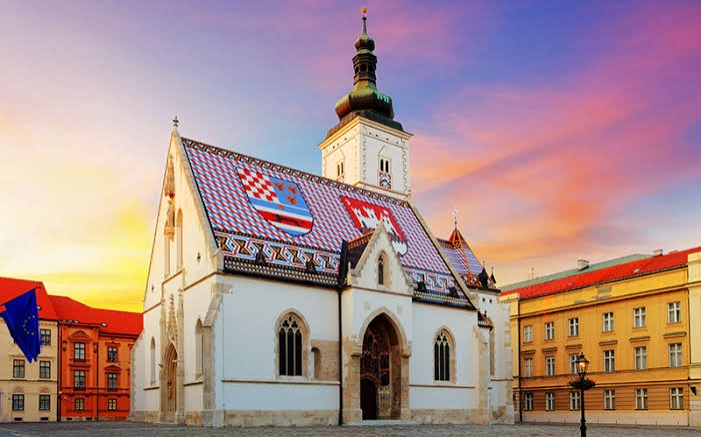 Not long after his appearance with this sash, and the raising of the same flag in replacement of the socialist flag of Yugoslavia, the design of the flag was dramatically altered, the fields of the coat of arms were reversed in configuration and adopted the official Serbian Karađorđević monarchist version of the 1st Yugoslavia after world war one. In addition to the reversal of the fields, a crown was added representing key Croat regions.
Not long after his appearance with this sash, and the raising of the same flag in replacement of the socialist flag of Yugoslavia, the design of the flag was dramatically altered, the fields of the coat of arms were reversed in configuration and adopted the official Serbian Karađorđević monarchist version of the 1st Yugoslavia after world war one. In addition to the reversal of the fields, a crown was added representing key Croat regions.
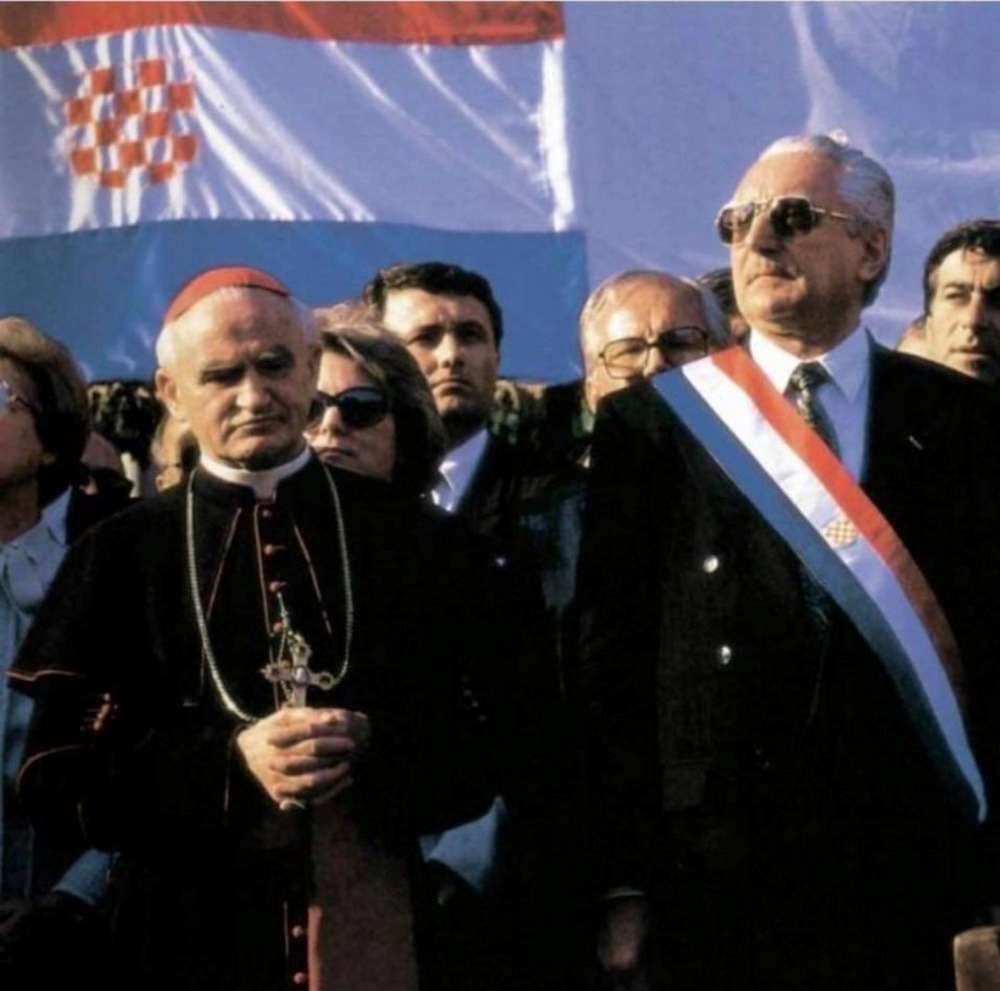
Tudman openly admitted that the reappearance of the historic Croat flag, and its historic coat of arms, was a peril to the fledgling new republic and that international perceptions had the potential of associating it with the world war two flag of the NDH (Independent state of Croatia) at a time when the world, unlike today as is the case with the situation in the Ukraine, was more inclined to watch the republic drown in the torrential onslaught against it, defenseless with arms embargos against it, than come to its aid. This was the reason given even though the NDH era flag, although the official flag of the country well before WW2, had an added feature being an emblazed “U” nesting within a traditional Croatian Pletar in the upper left-hand corner.
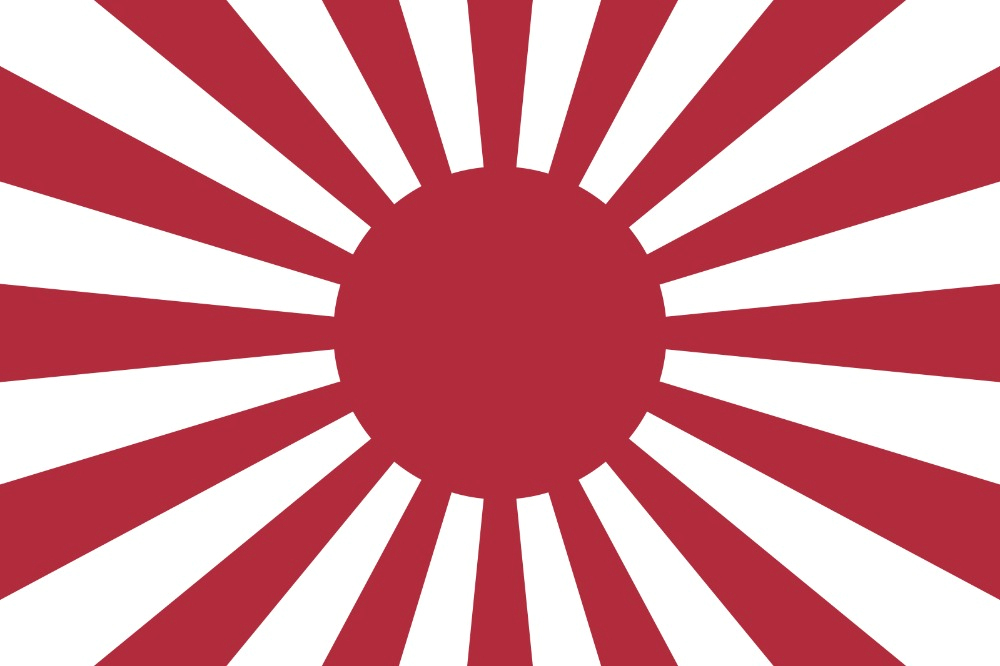 Nevertheless, in the eyes of the world the feeling was that either the historic flag and coat of arms had been corrupted, or perception was that that version of flag was a manifestation of WW2.
Nevertheless, in the eyes of the world the feeling was that either the historic flag and coat of arms had been corrupted, or perception was that that version of flag was a manifestation of WW2.
A striking comparison to this scenario exists to this day, and we only need to look at a country which also found itself in alliance on the wrong side of the allied forces. Japan’s historic flag still flies to this day, coined the flag of the rising sun, with a white background with single red circular disc in its center and rightly so as it has a long historic and cultural history, yet so does its military version being the same national flag with emanating red rays.
This version, a long-standing historic flag in its own right having existed well before any of the great wars never suffered the corruption other national symbology did, even though, its use and association with war crimes committed by the imperial Japanese forces during WW2 to this day stand as some of the most brutal recorded and reported.
 A similar scenario exists today in Germany, the Iron Cross was a long standing symbol first originating from Prussia and was established in 1813 during the Napoleonic wars, it carried over to WW1 and eventually was modified during WW2 by the Nazi party to include a Swastika embedded in its central body. Even after WW2, in 1957, veterans of Germany’s WW2 forces were reissued not only the iron cross but so called denazified versions of all other WW2 issued medals, excluding SS and Nazi party medals, in recognition of their service to Germany. If this was attempted today, the outrage would be overwhelming, however, the German government of the day was adamant that the rehabilitation of these symbology’s was paramount and they went to extraordinary lengths to preserve their pre WW2 legitimacy.
A similar scenario exists today in Germany, the Iron Cross was a long standing symbol first originating from Prussia and was established in 1813 during the Napoleonic wars, it carried over to WW1 and eventually was modified during WW2 by the Nazi party to include a Swastika embedded in its central body. Even after WW2, in 1957, veterans of Germany’s WW2 forces were reissued not only the iron cross but so called denazified versions of all other WW2 issued medals, excluding SS and Nazi party medals, in recognition of their service to Germany. If this was attempted today, the outrage would be overwhelming, however, the German government of the day was adamant that the rehabilitation of these symbology’s was paramount and they went to extraordinary lengths to preserve their pre WW2 legitimacy.
Today, the iron cross or “Eisernes Kreuz” is a symbol that appears within the German military scope of its armed forces and was reintroduced as an official medal issued to recipients that participated in UN peacekeeping expeditions in both Kosovo and Afghanistan. I’m sure there are numerous other examples of this having occurred, and internationally the efforts of these two respective modern countries and their governments went to great pains to disassociate their valued symbiology’s from their past transgressions through a process of rehabilitation. However, sometimes rehabilitation takes an alternate course of deception, a chameleon approach that hoists it aloft in winds of conjecture where it serves one particular ideology in stealth, while presenting a false perception to the accepting.
The False Flag.
The Balkans, as the Western world has coined it, underwent equal and as brutal an upheaval during WW2, Yugoslavia in case, had for the previous 20 years endured a one sided totalitarian regime under the Serbian Karađorđević reign. The kingdom which had formed as a result of agreement between Slovens, Croats and Serbs was initially declared as “The Kingdom of Slovens Croats and Serbs” however, this soon changed as Croats and Slovens became the two subservient of the Serbian culture, democratic process and structures were dismantled, and the renamed Yugoslavia became a country under literal martial law solely ruled by the Serbian monarchy. Open assassination of political opponents was common, declarations of death sentences against opponents, even in-absentia, to this totalitarian and culturally driven regime were common place.
The key imperial storm troopers, which is an apt phrase considering the situation, were the royalist forces with sworn allegiance to the Serbian monarchy known as the Chetniks. Just prior to the outbreak of WW2 in the Balkans, the Karađorđević monarchy under the regency of Prince Paul entered into an alliance with Adolf Hitler, Paul himself outfitted in military garb as leader and commander of Yugoslavia met with Hitler in Berlin, and the fate of Yugoslavia’s allegiance was sealed between the two.
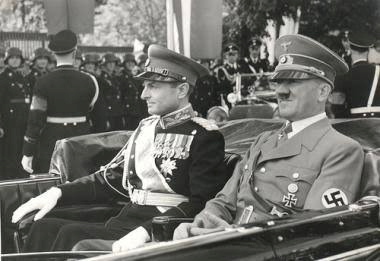
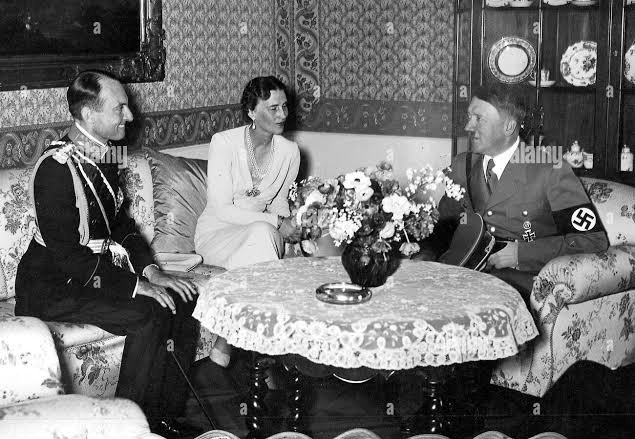
Shortly after, a coup d’ete in Serbia took place and King Peter II installed as monarch, Paul’s monarchy made its exit and into exile. However, rather than making their way to the sanctuary of their new allies, they made their way to Britain instead while Hitler moved his troops into Yugoslavia, stabilized the situation and uprising and installed the General Milan Nedić government which aligned itself with Germany. 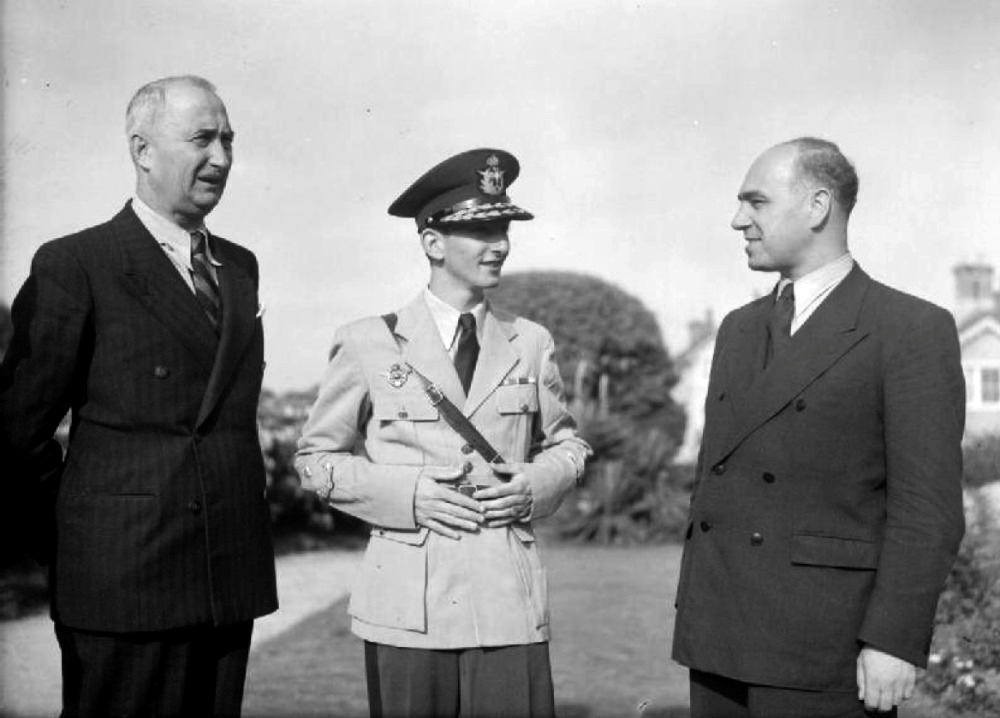
The Karađorđević’s quickly performed a costume change with the young Paul donning a British military uniform replacing the one he had proudly worn sitting next to the Fuhrer in the rear seat of a Mercedes limousine as they drove through Berlin on weeks earlier. The Nedić Government was composed itself of Serbian nationalist who supported the monarchy, and indeed within it were high ranking Chetnik military monarchists, remember that Paul had been opposed by other Serbian factionists, was now in exile, but remnants of his loyal guard who had also been opposed now nested within the newly formed axis government.
Meanwhile substantial Chetnik numbers during the initial turmoil made their way into the former interior of the Yugoslav realm particularly into Croatian regional territory which included modern day Bosnia and Herzegovina, Dalmatia and Slavonia predominantly under the command of Draža Mihailović. They faced two enemies now, their former foes in the Croats who they had hunted and persecuted during the former Yugoslavia and the emerging Communist led forces of one Josip Broz Tito. In real terms they had a fight on their hands against not only the communists aligned with the allies, but with the Croats aligned under duress to a greater extent due to Karađorđević’s treachery to the Axis.
 The Chetniks maintained a single mantra, preservation of the Monarchy and their authority bestowed upon them at the conclusion of WW1 by the Western powers over any lands that that monarchy ruled as a result. So began their alliances with the allies for a time against the Axis and predominantly the Croats in which they had another axis partner in Italy who wanted to cleanse Dalmatia of all Croats and succeed it to Italy in its entirety. The Chetniks had no issue in doing so on be half of their masters. After all their monarchy had signed the Rapallo agreement with Italy in the 1920’s agreeing to the annexation of the Croatian Dalmatian coast to the Italians in the first place so they were carrying out orders. At the same time, the deposing communist forces of Josip Broz Tito who had emerged from the failed, or not so failed, depose of prince Paul were also enemies they needed to deal with, and did as they went on their merry way, but their monarch was in London with the allies in exile, his government was in exile in London, and so a creative masquerade unfolded where the Chetnik’s, loyal to Paul were promoted as allied insurgents on the one hand, yet collaborators of the Axis with clear lines of communication and collaboration with the Nedić Government in Belgrade.
The Chetniks maintained a single mantra, preservation of the Monarchy and their authority bestowed upon them at the conclusion of WW1 by the Western powers over any lands that that monarchy ruled as a result. So began their alliances with the allies for a time against the Axis and predominantly the Croats in which they had another axis partner in Italy who wanted to cleanse Dalmatia of all Croats and succeed it to Italy in its entirety. The Chetniks had no issue in doing so on be half of their masters. After all their monarchy had signed the Rapallo agreement with Italy in the 1920’s agreeing to the annexation of the Croatian Dalmatian coast to the Italians in the first place so they were carrying out orders. At the same time, the deposing communist forces of Josip Broz Tito who had emerged from the failed, or not so failed, depose of prince Paul were also enemies they needed to deal with, and did as they went on their merry way, but their monarch was in London with the allies in exile, his government was in exile in London, and so a creative masquerade unfolded where the Chetnik’s, loyal to Paul were promoted as allied insurgents on the one hand, yet collaborators of the Axis with clear lines of communication and collaboration with the Nedić Government in Belgrade.
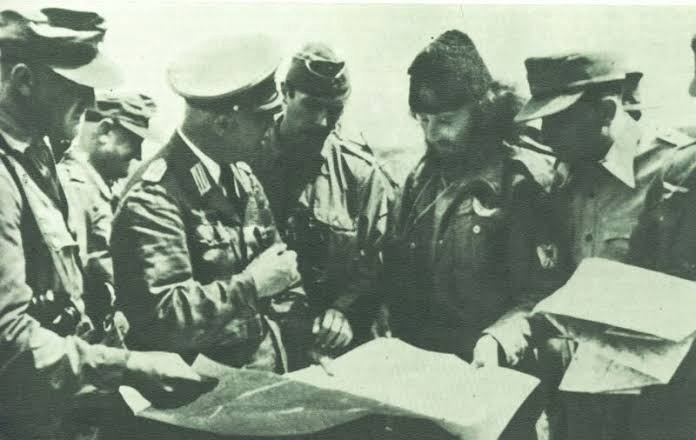
The same Government which in 1942 declared Serbia as the second axis nation to be “Judenfrei” or “Jew Free” after its campaign to cleanse itself of all Jew’s.
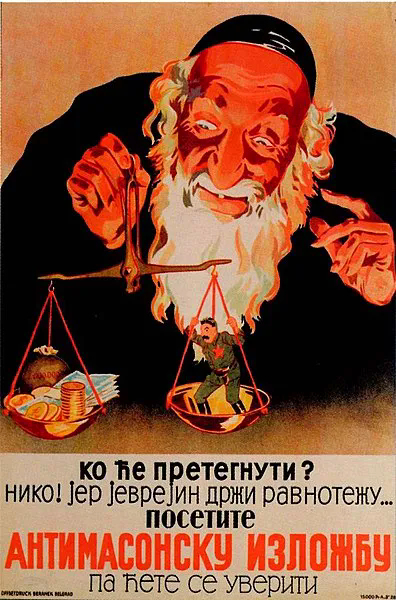

By 1943, the allies had realized their mistake and openly announced that the Chetnik’s were collaborators of the Axis severing ties with them and putting their money on and behind Broz Tito’s communist partisans. Hollywood however painted the Chetniks as hero’s, a slick rehabilitative piece of glitzy marketing, and slowly but surely, even after the surrender of Chetnik forces to the allies in Trieste in May 1945 at which time they were interred as prisoners of war, their story was forgotten, or better still rewritten. Their military flag that existed well before WW2, had seen action in WW1, and then afterward as a tool of terror during the first royalist regime Yugoslavia post WW1 represented the genocide of Croats and Slovens was preserved and rehabilitated. 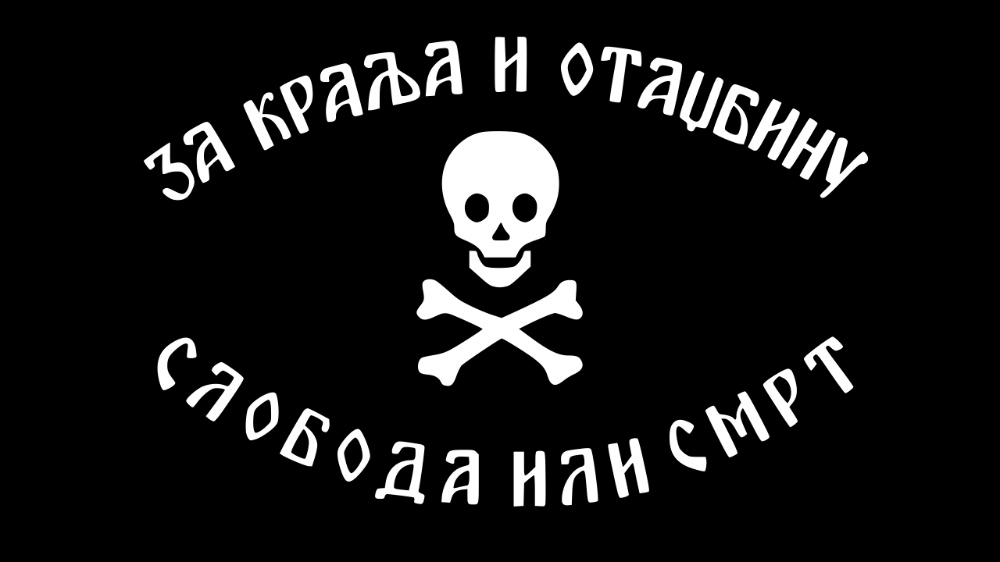
In 1991 when the breakup of the post WW2 Tito’ist Yugoslavia began, Serbian nationalism under Milošević, Karadžić, Mladić and Šešelj once again became prominent in the Serbian psyche, and again it began to emerge held aloft by bearded Serbs brandishing the Royalist military head gear of their royalist forefathers know as a Šajkača complete with their insignia known as a Kokarda.
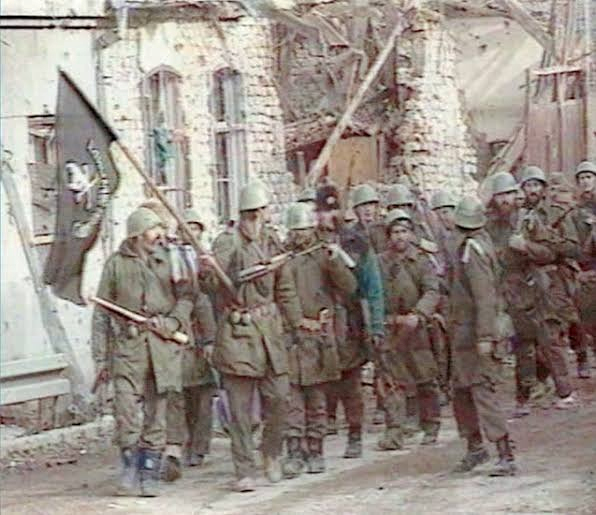 Chetniks parading as JNA troops in Vukovar shortly after its fall.
Chetniks parading as JNA troops in Vukovar shortly after its fall.
These royalist now masqueraded as loyal JNA ( Yugoslav National Army) troops wanting to preserve the Yugoslav ideal when in fact, just as their forefathers, concealed their true intent of a greater Serbia and once again went on a genocidal spree across Croatia and Bosnia in particular. Their efforts are immortalized in mass graves they left in Srebrenica, Vukovar and countless other locations during the war of independence of 1991 – 1995. The Hague would later trial their masters as a result of their atrocities. Almost 80 years after the conclusion of WW2, and 30 after the so-called Balkan wars, this flag makes its way in modern public view unrestricted or challenged. ANZAC day, Australia and New Zealand’s memorial day and march of WW2 veterans and their allies embraces the Chetniks within their ranks as allies, although by 1943 the Chetnik’s had been jettisoned being proclaimed as Nazi collaborators by both Britain, her colony entities and the United States. 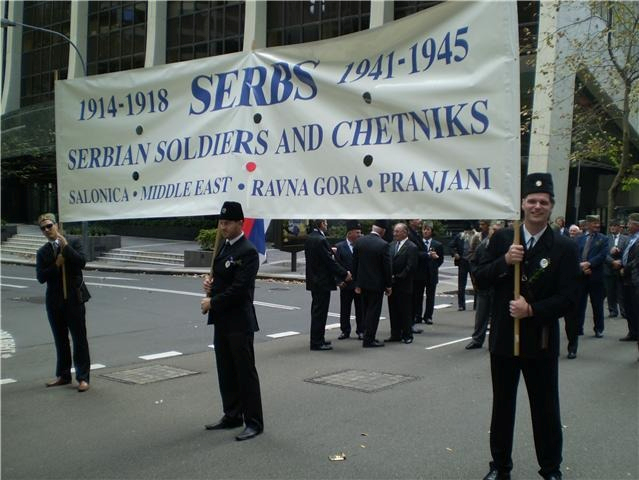

And 30 years after the Balkan wars, on top of having to bear witness their imagery, garb and insignia in ANZAC day commemorations, we now have to be reminded of them at events such as the Australian open where the Chetnik spirit of betrayal and infamy are displayed and supported by Serb Australians in the stands, and the Likes of Djokovic as a player along with his father.
In fact, the Ukrainian community must also be taken aback as these same Chetnik offspring and loyalists have incorporated the Russian flag, images of Putin, and the “Z” insignia as part of their fair proclaiming their allegiance to their so called “Mother Russia.”
And we shouldn’t forget that even in these modern times, and as recently as of todays conflict in Ukraine, Serbian Chetnik’s have been participants in Russia’s annexation of Ukraine siding with Putin’s military hardliners on the ground from the start in 2014.

Serbian supporters of Novak Djokovic at the Australian Open displaying their support for their Chetnik brotherhood with mother Russia. (Melbourne Australia 26/01/2023)
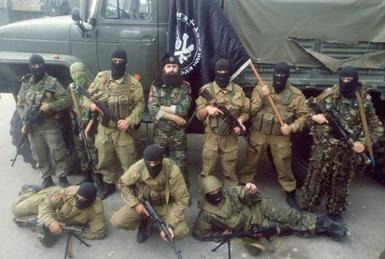 Chetnik volunteers photographed in 2014 supporting Russian separatists in Eastern Ukraine.
Chetnik volunteers photographed in 2014 supporting Russian separatists in Eastern Ukraine.
How long will it take for the Western world to appreciate the context of what this nationalist movement represented historically and in modern terms? And when will we see the likes of Australian Open’s CEO Craig Tily, of the National President of the RSL, Greg Melick, step in and launch enquiries into this false flag strategy that negates the legitimacy of their respective endeavors?
Perhaps we should fly inverted Australian and New Zealand flags as a sign of distress?
John Ovčarić
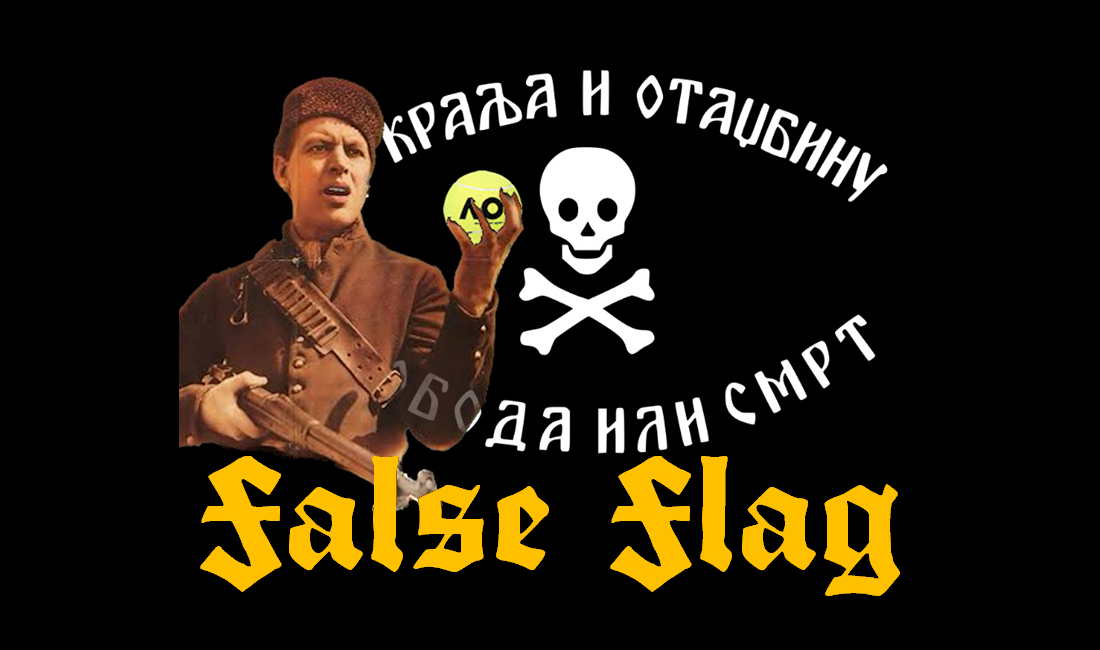
Maybe time to ask for a 60 minutes interview. Lets go national.
You are more than welcome to forward this to them however I don’t like your chances.
Vrijedno stivo